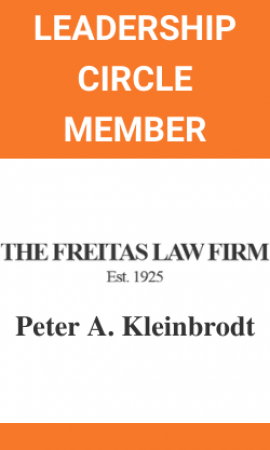In the News
News
Jul 02, 2019
Understanding Invisible Threats and Rewards to Improve Mediation Results
Jul 02, 2019
By Patricia Prince

“To subdue the enemy without fighting is the acme of skill.”i Although addressing The Art of War, Sun Tzu’s axiom applies equally to litigated cases and speaks to the promise of mediation. One of the best offensive strategies for succeeding in mediation, as in war according to Sun Tzu, is to “[k]now the enemy and know yourself; in a hundred battles you will never be in peril.”ii
Litigators Who Have the Edge in Mediation
In my experience as a mediator, the best attorneys arrive at my mediations with the confidence to go to trial, but they operate from the foundation of Sun Tzu’s principles, having completed and discussed with their clients a case analysis, an exploration of the client’s needs and interests, an examination of options and potential costs, and a negotiation strategy.
Obtaining an optimal resolution, however, requires more. As a long-time mediator, I have observed a seeming paradox: both sides to a dispute will obtain better mediation results if they can shift from the war footing of litigation to the problem-solving collaboration of mediation. This is not inconsistent with Sun Tzu’s guidance, as it is in furtherance of knowledge. In fact, the cornerstone of this work is fully understanding the opposing party’s point of view (to appreciate differences in case analysis) and motivations (to appreciate interests and priorities).
A useful tool attorneys can use to boost their mediation results is the SCARF neuroscience model for collaborating and influencing others, which was developed by David Rock.iii I have used its key principles to make sense of human behavior and as a powerful complement to case and interest analysis and negotiation.
Attorneys can also use it to their benefit during mediated negotiations on behalf of their clients, particularly to anticipate and alleviate perceived threats (as opposed to actual threats) and, importantly, to anticipate and amplify perceived rewards during the negotiations.
SCARF User Guide for Attorneys
The SCARF acronym represents five elements that relate to human neurological responses to threats and rewards.iv Mediation is designed to exchange information and expand perspectives, but without understanding our most basic neurological reaction to threats and rewards, the goal of mediation can be entirely thwarted.
On the flip side, understanding innate threats and rewards that are part of the (often subconscious) human experience can help us craft more skillful and therefore more successful negotiation results. In short, these elements can automatically impact our feelings about others. If we are aware of the elements, we can avoid or enhance the perceived threats and rewards perceived by the brain. This can bring incremental gains that add up in a settlement negotiation.
SCARF stands for:
S: Status
C: Certainty
A: Autonomy
R: Relatedness
F: Fairness
Status: Corresponds to perceived importance in relation to another. For litigation parties, as they meet their opponent in a mediation, this can be viewed through several prisms, including social class, education, wealth or employment status, to name a few, and often is viewed in terms of having power or lacking power. Attorneys representing the parties can often even out a power imbalance, although there is also a status element for parties’ attorneys, as each comes into the case implicitly or explicitly displaying his or her reputation, firm size, funds available to take case to trial, trial experience and record, and measures of professional competence.
Status can play a role in the power dynamics at play in a negotiation. Recognizing, understanding and managing this dynamic is important, whether power is explicitly or implicitly asserted, because the human brain is always seeking status. If one side feels disrespected (i.e., that their status has been diminished), they will often act out in a way that is counter-productive to the negotiations. This can take place on either side of the power imbalance.
In the employment context I frequently hear aggrieved employees demanding respect, but I also have observed more powerful (in terms of the status element) employers expecting greater deference because of their perceived power. If a status issue is detected, one of the best ways to address it is showing respect to the other side. Your mediator can also remind the parties of process issues that eliminate any perceived imbalance through the equal application of the law, representation by counsel, participation in a voluntary mediation, and other factors that will fill a status deficit. Once any status issues are addressed, the wheels of negotiation are free to move again.
Certainty: For parties in litigation, this typically expresses itself in the negative: lack of control of future costs, time, emotional energy, and, ultimately, the outcome of the case. For attorneys, certainty is usually a risk assessment based on good/bad facts, applicable law, the client’s probable presentation at trial, comparative trial experience, and a dash of luck.
In the mediation context, considering risk meaningfully and realistically is typically painful for parties because it is an uncertain threat most people would prefer to avoid. Understanding that this is a normal, neurological response is helpful. Parties sometimes become overwhelmed with the uncertainty and cannot continue meaningfully with the negotiations. Antidotes to this state of “overwhelm” can be as simple as taking a break for a brief walk or a cup of coffee, just to re-ground the person. Attorneys can provide extra support, as well, by merely listening to concerns, simplifying choices and reminding the client of negotiation plans.
Uncertainty is something the brain eschews. In this sense, a certain settlement can be a balm that soothes the pain of litigation’s lack of certainty. This can be helpful when your client has achieved a good settlement number, but it can also be dangerous if the other side is playing hardball.
Autonomy: For parties mired in the litigation process, it is difficult to exercise autonomy, since most decisions are out of the control of the parties—with the notable exception of mediation. It is also helpful to consider the parties’ autonomy in the circumstances leading to the litigation (e.g., the worker trapped in his job, the employer who had to implement a reduction in force). It is easy for both sides to feel a lack of autonomy as they consider what led to their dispute. The litigation process rarely makes things better.
Self-determination is a key principle of mediation, yet parties often feel unheard and frustrated. Attorneys may also experience issues relating to autonomy that impact the mediation, including a client’s willful exercise of autonomy that seems counter to the client’s best interests (e.g., a corporate defendant not taking counsel’s settlement advice or a plaintiff rejecting advice to focus on her wage and hour claim instead of a legally weaker discrimination claim). Resistance to reasonable advice, norms or interests, can signal a need for autonomy.
The most effective remedy is typically listening carefully and verifying your client’s needs and goals before moving forward. Since parties always choose their attorneys, they typically want the advice of their attorneys. If the client is still resisting important advice, another option is to generate more options and allow space for the party to utilize counsel as an advisor. The brain can then welcome the advice received as helpful, as opposed to fighting against the advice because it is perceived as someone telling them what to do, which takes away their autonomy and is therefore a threat.
Another important note: The brain interprets threats more strongly than rewards, so telling someone they must change their opinion is resisted more fiercely than offering incentives to change their point of view. My best indicator of a need for autonomy is when I find myself arguing with a party (or counsel) in mediation caucus over an issue of case analysis. As soon as I notice this, I realize I probably have missed something of importance and the party’s (or attorney’s) sense of autonomy is pushing back. Becoming curious and listening completely is a great antidote for encroaching on someone’s autonomy. The interesting and important thing about this approach is that once autonomy is restored, the person is better able to receive difficult information.
Relatedness: This has to do with the brain’s constant evaluation of people as “friend” or “foe.” The brain is always trying to ascertain the level of desired relatedness—from highly trusted friend to threatening foe. In litigation, the parties have largely determined that their opponent is an untrustworthy and threatening foe. It is not surprising that this protective neurological function would be a stumbling block in mediation, as each side tries to help the other understand its perspective and/or case analysis.
I think of “relatedness” as “trust.” When there is a lack of trust, it is even more important to listen with greater discernment to the information being transmitted. Be sure to ask, “Am I discounting the information because I dislike the person giving me the information?” (Sometimes it is equally important to ask, “Am I being overly trusting of the information being transmitted by the person for whom I feel an affinity?”) Sometimes our trust or distrust is warranted, but it is always worth making a closer examination of the scrutiny under which we put all information.
Mediators fill the trust gap between parties to a mediation by their very presence. Keep this in mind as you formulate offers—sometimes it is helpful for your mediator to suggest an approach to moving the negotiation forward simply to avoid the negative attribution the other side would attach to a proposal from an opponent. Information is “sanitized” by the mediator for unbiased consideration by the other side. Mediators may engage in case analysis, discuss strengths and weaknesses of the case or explore interests, and these activities may also build trust, but it is always prudent to keep your brain’s automatic tendencies in mind as you listen to information.
Fairness: The fact that fairness is a neurological drive is worthy of consideration during a mediation. (I keep this deep-seated drive in mind by remembering the Tedx Talk by Dr. Frans de Waal with a pair of monkeys, available on YouTube. One monkey protests after receiving different food—a cucumber versus a grape—in exchange for the same task performed by the other monkey. Humans are more covert in their frustration when not treated fairly, but the monkey shows what it feels like to be treated unfairly.v You will love the visual, so check it out if you have not seen it!)
The principle of fairness is vital to the success of any mediation. Since mediation is voluntary, there must be a basic sense of fairness under the circumstances for the parties to agree to settle instead of going to trial. The opportunity the concept of fairness brings about can be seen in making reciprocal offers. Interestingly, offers of differing monetary value can still be experienced as fair exchanges, particularly when presented with tradeoffs tailored to each side’s values and when presented utilizing the lens of general fairness. Fairness, after all, is in the eye of the beholder.
For example, in a discrimination case I mediated, the parties could not bridge a $70,000 gap between offer and demand with money alone; however, the case settled after plaintiff agreed to reduce her settlement demand in exchange for a two-hour meeting with defendant’s HR Department (including a clear understanding that no action would be required as a result of the meeting, but that the HR Department would listen in good faith to plaintiff’s recommendations for improvement of defendant’s policies). Because plaintiff valued changing defendant’s work environment for future workers and because she came to believe that defendant’s representatives were genuinely open to improving the defendant’s policies, a lower number from defendant, coupled with the meeting, was seen by both sides as a fair settlement.
In a New Yorker article, Maria Konnikova explored research on innate and learned fairness, including the differences between advantageous inequities and disadvantageous inequities, concluding that “Our ideas about fairness are relativistic, rather than absolute.”vi She goes on to note that “[i]n many ways, we approach fairness as a form of social signaling. People…use fairness to negotiate their place in a social hierarchy.”vii This is something I have observed in mediation, as well, and is just another element that sometimes can be tapped to find a mediated agreement both sides consider to be fair, when combined with their risk analyses and other interests.
In an intellectual property case I mediated, I commented in caucus to a defendant manufacturer that I was surprised he (the owner) was defending the trademark infringement case we were mediating with such vigor, since the product at issue was such a small part of his overall business, in contrast to the plaintiff, whose entire business was based on the product. The owner paused and then agreed with me that the product was unimportant to his business. This shift in his perspective helped bring the case to resolution and is an example of the use of fairness discussed by Konnikova to negotiate one’s place in a social hierarchy.
Both sides must come to an agreement that they consider fair in consideration of the different valuations of case strength and the different importance they place on other interests. However, contemplating our deep-seated drive for fairness provides many additional opportunities for advantage during the negotiations. Identifying these issues and helping both sides find the equilibrium that represents fairness creates an optimal case value for both sides.
Attorneys Who Remember SCARF in Mediation Can Optimize Results
The SCARF model does not eliminate the need for full case analysis and other principles of negotiation, such as making sure decision-makers are at the table, a well-considered first offer and demand, management of client expectations, a negotiating plan, etc. However, listening for SCARF themes to reduce perceived threats and enhance perceived rewards can add significant value to one side or the other, and it usually will add value for both sides.
As a model, SCARF describes basic human drives that can be understood and anticipated, particularly when considered in the context of the mediation of a litigated case. Each side desires status, which may include the ability to exercise power or importance socially, economically, through litigation or altruistically. The desire for certainty can be a powerful driver of behavior because we all want a secure and certain future. The need for autonomy often can be felt as an impediment to progress until self-determination is restored. Trust is at the heart of the “friend” or “foe” calculation of relatedness.
Even when trust is at a minimum between the parties, attorneys can help their clients immensely by screening information more critically and using a mediator to neutralize negotiation moves. Fairness in mediation is a tremendously powerful concept because it is relative in nature, allowing tradeoffs that hold different value for each side.
Looking for and understanding the SCARF drives within your opponent, your client and yourself would be consistent with Sun Tzu’s thoughtful approach to battle. It also produces great settlement results.
i Griffith, Samuel B., translator. The Art of War, Sun Tzu. Oxford University Press, 77 (1963).
ii Id. at 84.
iii David Rock developed the SCARF model in 2008 and has used its principles largely in the workplace to help people work more effectively together.
iv Rock, David, “Managing with the Brain in Mind,” pwc Strategy&Business (originally published by Booz & Company), Issue 56, Autumn 2009. See also, Rock, David, "SCARF: A brain-based model for collaborating with and influencing others," a paper originally published in 2008 in Issue #1 of the NeuroLeadership Journal (co-founded by Rock).
v Brosnan, Sarah F. and de Waal, Frans. Monkeys Reject Unequal Pay. Nature, 425, 297-299 (2003). Demonstration of the experiment with capuchin monkeys: https://www.youtube.com/watch?v=meiU6TxysCg.
vi Konnikova, Maria, “How We Learn Fairness.” The New Yorker, 7 Jan 2016.
vii Ibid.
Patricia Prince is a mediator in the areas of employment, business, intellectual property, trust and probate, and personal injury disputes. She is known for working effectively with parties and counsel in high conflict cases to move disputants from impasse to agreement with creativity and persistence, drawing on her experience as a civil litigator for over a decade and as a mediator since 2001. She is also fluent in Spanish.












